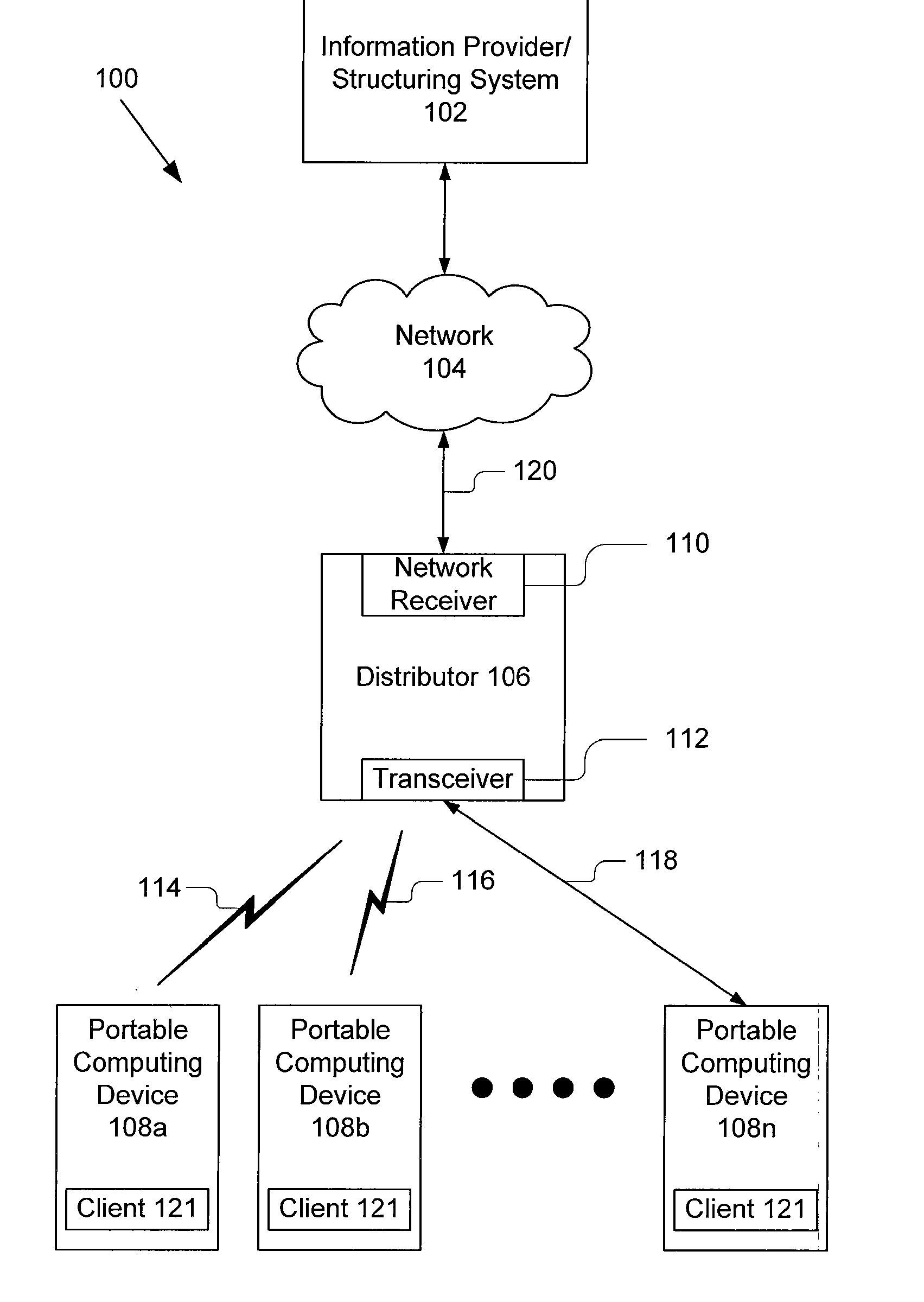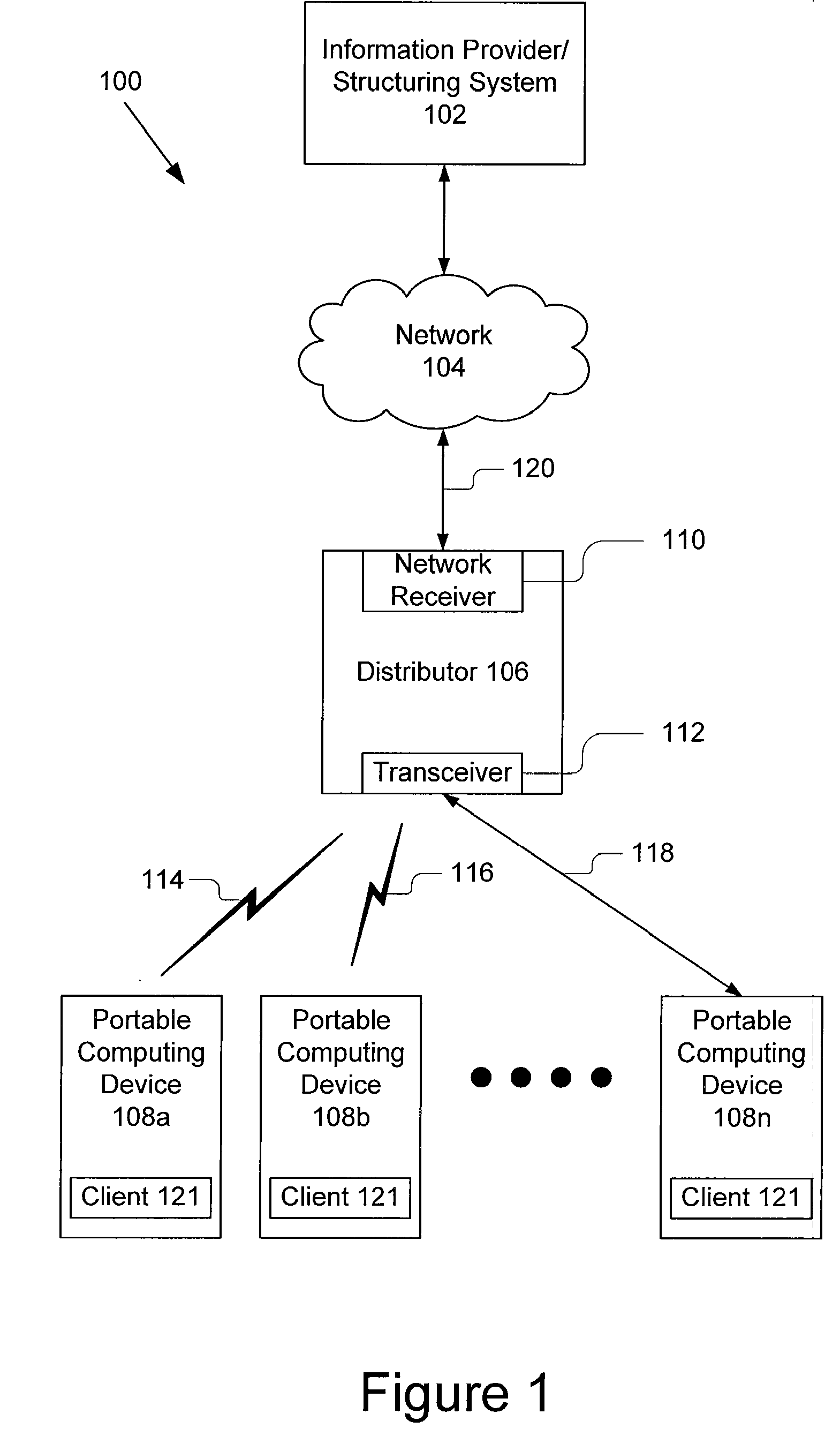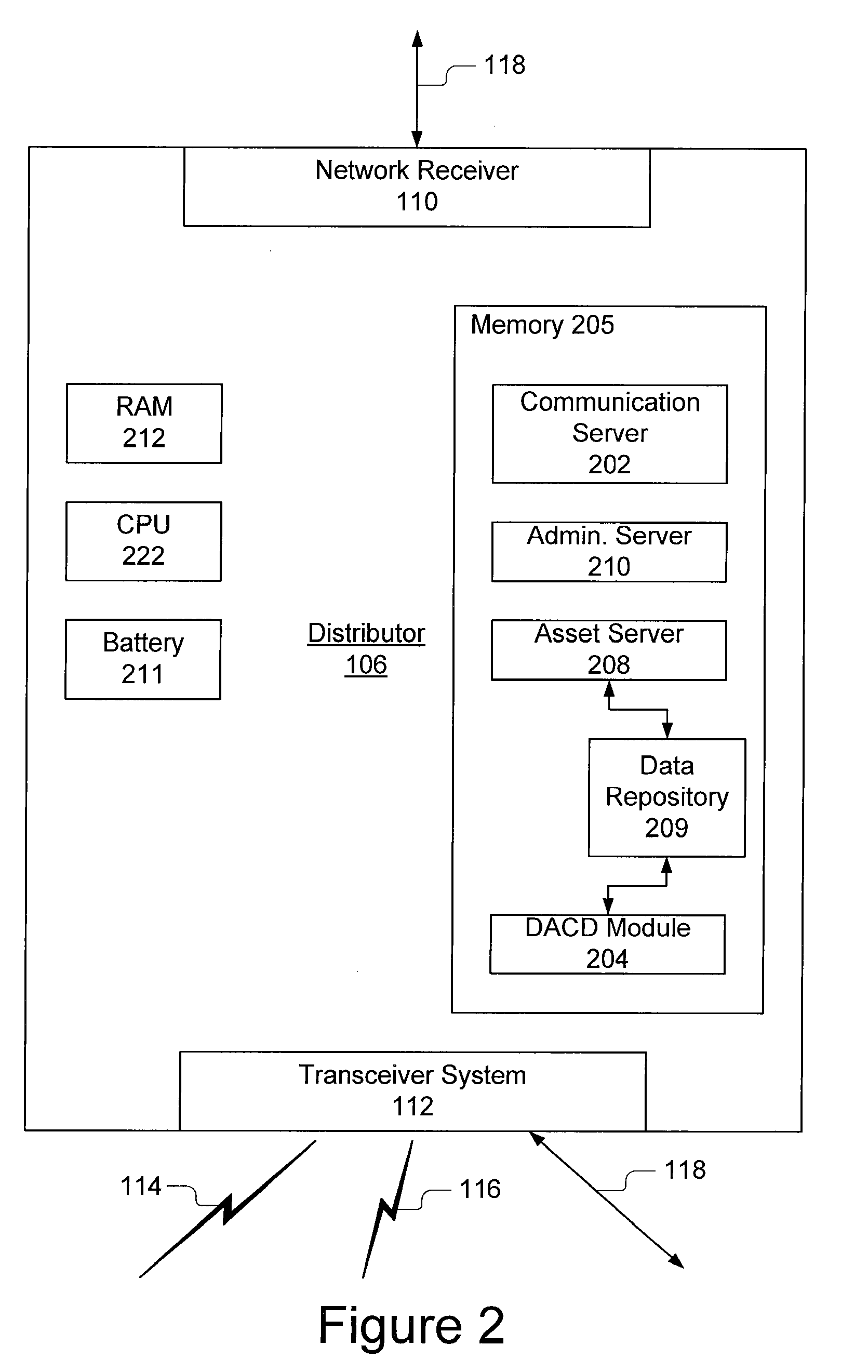Device-aware content delivery
a content delivery and device-aware technology, applied in the field of information system networks and portable computing devices, can solve the problems of cumbersome connections, limited availability, and loss of access for typical computer users to this rich pool of information
- Summary
- Abstract
- Description
- Claims
- Application Information
AI Technical Summary
Benefits of technology
Problems solved by technology
Method used
Image
Examples
first embodiment
[0069]FIG. 4 is a flowchart of a general method for device-aware content delivery according to the present invention. In particular, the method for device-aware content delivery of the present invention uses an algorithm and information obtained via wireless inquiries to infer the type of portable computing device 108 such that some programmatic action appropriate to the device can be taken. The method begins by discovering 402 at least one portable computing device 108. For example, the distributor 106 sends out a beacon signal. One or more portable computing devices 108 in the area will respond to the beacon. Next, the method determines 404 the device type of the discovered portable computing device 108. The device type of the portable computing device 108 is advantageously determined using a two-part interrogation process which combines empirical data with an exact confirmation of the device type. Examples of such processes for determining device type are described below with ref...
second embodiment
[0070] Referring now to FIGS. 5A and 5B, the method for device-aware content delivery according to the present invention is described. Referring now to FIG. 5A, the process begins with the distributor 106 determining 502 whether any new devices 108 have been discovered. If not, the method loops through step 502 to repeatedly determine whether any new devices have been discovered. If a new device has been discovered, the method proceeds to step 504. In this step, the method adds the device ID to discovery cache. Then the method determines 506 the device type. Example embodiments for this step are described in more detail below with reference to FIGS. 6-8. Once the device type is known, the method determines 508 whether portable computing device 108 supports a browser. If the portable computing device 108 supports a browser, then the user can selectively choose which content to accept or reject. In contrast, if the browser is not supported, the portable computing device 108 is forced ...
PUM
 Login to View More
Login to View More Abstract
Description
Claims
Application Information
 Login to View More
Login to View More - R&D
- Intellectual Property
- Life Sciences
- Materials
- Tech Scout
- Unparalleled Data Quality
- Higher Quality Content
- 60% Fewer Hallucinations
Browse by: Latest US Patents, China's latest patents, Technical Efficacy Thesaurus, Application Domain, Technology Topic, Popular Technical Reports.
© 2025 PatSnap. All rights reserved.Legal|Privacy policy|Modern Slavery Act Transparency Statement|Sitemap|About US| Contact US: help@patsnap.com



